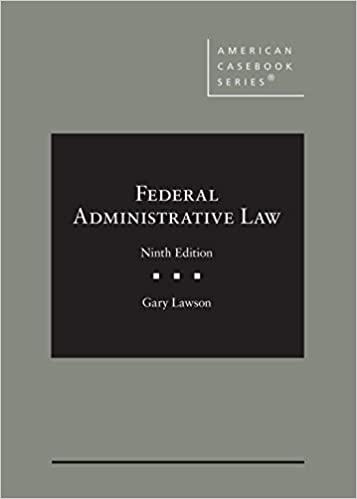4. Patrick Clawson was described by reporter Karen EranchErioso in a newspaper story as a \" lgis era St. Louis journalist turned private eye turned PEI informant.\" The story was published in the St. Louis Post Dirpaicn. The fact that he had been characterized as an informant bothered Clawson, who saw it as damaging to his reputation. Accordingly, he brought a libel case against the Port Dispatch. Recall that to be libelous, a statement must be false and "hold the victim up to ridicule= contempt, or hatred.\" Clawson would have preferred the term whirriebiower rather than informant: because that term commands more respect. Why is the use of the term informant to describe Clawson not libelous? Explain. [S ee: Cimvron It. St. Louis PostDispatch, No. 4CV436, see also \"Media Law: Label of 'lnformer' Is Found Not Defamatory,\" The National Law Journal, September ll= Et'i] 5. Curtis Ellison was riding as a passenger in his own vehicle when it was pulled over by the police for a parlcing violation. The vehicle had actually been targeted because the police had routinely checked the license plate through the department's database. This routine check had revealed that the owner of the vehicle had an outstanding warrant pending against him. lWhen the police searched the van= they found two rearms hidden in the vehicle. As a result, Ellison was charged with felonious possession of a rearm. He argued that the search had violated his Fourth Amendment rights and that his right to privacy had been infringed. The trial court agreed and dismissed the case. The case went to the appellate court. The issue before the appellate court was whether Ellison had a high expectation of privacy about the number on his license plate. Although this is a criminal case, it is still interesting to speculate on how the court would rule on the expectation of privacy in relation to a license plate. Why should the appeals court reverse the ruling by the trial court that there is a high expectation of privacy in relation to a license plate? Explain. [See United States v. Ellison, No. (141925; see also \"Criminal Practice: No Privacy Expectation on License Plate l"'~i'u;mbers,"= The National Law Journal, September 18, E, p. 16.] IS. A St. Louis police ofcer was speeding the wrong way down a one-way street when he collided with a vehicle being driven by Arm Martin. Martin was seriously injured in the crash and brought a lawsuit against the police officer, the City of St. Louis= and the board of police commissioners. The board of commissioners is an agency of the state of l'v'Iissouri. Martin passed away, and her daughter, Kimberly Hodges, took over as the plaintiff in the case. The case was settled in relation to the board and the ofcer but not the city. The City of St Louis argued that the oicer could not be employed by both the board and the city at the same time. The city further argred that the oicer's real employer was the board, so it= the city, could not be held liable under the doctrine of vicarious liability. Why should the city he held liable under the doctirne of vicarious liability? Explain. [See: Hodges v. City ofSi. Louis, No. SCETZTIB', see also \"Torts: Ofcer Is City Agent Even if 'Worlculg for State Board,\" The Noiionai Law Jonrnai, March 12, EIGHT, p. 15.] 7". At the height of the modern civil rights movement, The New York Times ran a hillpage advertisement entitled "Heed Their Rising Voices." The advertisement detailed police elforts in Montgomery, Alabama, to suppress the nonviolent civil rights demonstrations being carried on there by thousands of college students. The police commissioner of Montgomery, LE. Sullivan, filed a lawsuit against The New ran: Enter, alleging that he had been libeled by information carried in the advertisement, even though he was never mentioned by name. Should the Court use the actual malice test in this case to determine whether the newspaper libeled the commissioner? Explain. [See: New York Times Co. v. Sullivan, Bid US. 234 (us. sup. cut]







